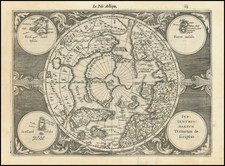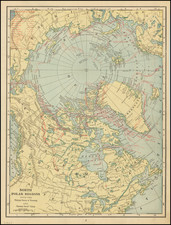Did a Young Buzz Aldrin see this Map of Groundbreaking Exploration Hanging on His Father's Wall?
Map Showing Routes of the Post-Gatty and Wiley Post Circumnavigation Flights -- Inscribed to Buzz Aldrin's Father
Fascinating presentation artifact, consisting of a map of the Northern Hemisphere, illustrating the route of two of the first circumnavigations of the globe by airplane in 1931 and 1933, along with a photograph of the two aviators, Wiley Post and Harold Gatty, with an inscription at the top, "To Ed. Aldrin" and signed by Gatty (who inscribed the map) and Post.
Illustrated on a northern hemispheric projection, the map documents two historic flights undertaken by Wiley Post, one of the early twentieth century's most accomplished aviators. The map traces the routes of Post's 1931 flight with navigator Harold Gatty and his subsequent 1933 solo circumnavigation of the globe, marking a profound period in aeronautical achievement and technological advancement.
In 1931, Wiley Post and Harold Gatty embarked on a global journey that would challenge and ultimately redefine the limits of aviation. Taking off from New York, their route traveled to Harbor Grace, Newfoundland, then across the Atlantic to England, and onward through Germany, Russia, and Siberia, before crossing over the Bering Strait to Alaska, and down through Canada to Cleveland, and finally back to New York. Completed in 8 days, 15 hours, and 51 minutes, the journey was planned using the Weems System of Navigation, an innovative method for precise global circumnavigation, which was a significant leap forward from the rudimentary tools used by Charles Lindbergh during his pioneering 1927 transatlantic flight.
The map itself serves as a visual chronicle of these voyages. The routes are marked, illustrating the airspace that Post and Gatty navigated. Each stop is a historical waypoint, capturing moments of rest and recalibration in pursuit of the flight record.
The Winnie Mae, a Lockheed 5C Vega, was acquired by Florence C. Hall and named after his daughter. Its white body with purple trim concealed the significant modifications it had undergone, including a 420-horsepower Pratt and Whitney Wasp engine. In total, the plane was 27 feet, six inches long, with a 41-foot wingspan and a weight of 2,595 pounds.
Following the record-setting flight in 1931, Hall gifted the Winnie Mae to Post, who continued to pioneer aviation technology. By the time of his solo flight in 1933, Post had equipped the Winnie Mae with the latest cockpit instrumentation, including the Sperry artificial horizon and directional gyro. These instruments were crucial as Post navigated largely by instruments alone, given the Winnie Mae often flew through cloud cover, and Post himself had to compensate for his monocular vision (post had one functioning eye).
On July 22, 1933, Post completed his solo flight, breaking his previous record with a time of seven days, 18 hours, and 49 minutes. Post’s achievements were recognized in New York City with ticker tape parades, and the 1931 flight was recorded in the book Around the World in Eight Days, written by Post and Gatty. These milestones were not the zenith of Post's or the Winnie Mae's careers. Post continued to innovate, collaborating with the B.F. Goodrich Company to develop the first pressure suit for high-altitude flight. Despite setbacks in 1935, Post's high-altitude flights proved that flying at such elevations could significantly increase speed, as demonstrated on his flight from Burbank to Cleveland.
The Winnie Mae is currently preserved in the Smithsonian's Udvar-Hazy Center.
In August 1935, Wiley Post and his friend Will Rogers, the celebrated humorist, embarked on an aerial tour of Alaska and Siberia in a hybrid aircraft combining parts of a Lockheed Orion and a Lockheed Explorer. The plane, powered by a 550-hp Pratt & Whitney Wasp engine and equipped with ill-fitting floats, was weighed down with excessive fuel and outdoor equipment. On August 15, departing from Fairbanks, Alaska, and heading towards Point Barrow, they encountered foggy conditions that led to a tragic miscalculation. Post, disoriented, was forced to make a landing in a lagoon to ascertain their position. Tragically, upon takeoff, the aircraft's engine failed, and the plane crashed, killing both men instantly.
Edwin Eugene Aldrin Sr.
Edwin Eugene "Gene" Aldrin Sr., born in Worcester, Massachusetts on April 12, 1896, was an influential figure in the history of American aviation. His career spanned both World Wars, where he served as an officer in the United States Army. After World War I, Aldrin was instrumental in the establishment of the Army's first test pilot school at McCook Field, Ohio, and later founded an engineering school that evolved into the Air Force Institute of Technology (AFIT) at Wright-Patterson AFB.
Aldrin was commissioned in the Army as a second lieutenant in November 1917, serving in the Coast Artillery Corps. His academic pursuit led him to the Massachusetts Institute of Technology (MIT), where he earned an M.S. in aeronautical engineering in 1918. His notable thesis work focused on anemometer development and indicators for internal combustion engines under the guidance of Arthur E. Kennelly.
Between the wars, Aldrin honed his aviation expertise, completing flight training in 1919 and transitioning to the United States Army Air Service in 1920. He held the position of assistant commandant at McCook Field until 1922. On March 22, 1924, Aldrin married Marion G. Moon and fostered connections with prominent figures in aviation, including Orville Wright and Jimmy Doolittle. His academic achievements culminated in a Sc.D. from MIT in 1928, specializing in the dynamics of spinning airplanes.
Aldrin Sr. flew a Lockheed Vega (the same type of plane flown by Wiley Post) over the German and Italian Alps and was personally acquainted with Charles Lindbergh and Howard Hughes. Aldrin Sr. is credited with an important role in supply Lockheed Vegas and parts for Jimmie Mattern's attempt to solo circumnavigate the world by air in June 1933 aboard a Lockhead Vega named The Century of Progress, one month before Wiley Post's successful circumnavigation. Mattern's efforts ended when he crashed in Siberia on June 14, 1933. He was eventually rescued by Eskimos and flown to Nome, Alaska, by Sigizmund Levanevsky.
In the lead-up to World War II, Aldrin served in various capacities, including the Air Corps Procurement Planning Office and at Fort Ethan Allen. During the war, he was recalled to active duty, initially commanding Newark Airport in New Jersey before taking on roles with the Eighth Air Force and in Washington, D.C. His wartime service was marked by significant contributions to aircraft design and development.
After retiring from active duty in 1946 and from the Air Force Reserve as a colonel in 1956, Aldrin continued to consult for NASA, particularly in the area of manned space flight safety. He passed away on December 28, 1974, in San Francisco and was laid to rest at Arlington National Cemetery.
Aldrin's legacy in aviation and aeronautical engineering is commemorated through the Edwin E. Aldrin Sr. Award at AFIT, recognizing graduates who exemplify outstanding leadership and educational achievements. His life's work laid a foundation for future advances in aviation and space exploration, and he is also remembered as the father of astronaut Buzz Aldrin, highlighting a family tradition of pioneering in flight.











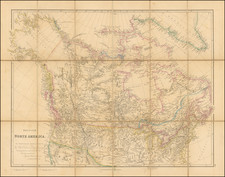
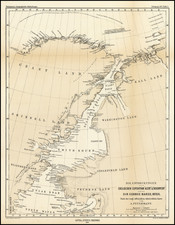
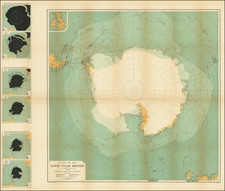
![[Grotto of Tethys -- Versailles] Le Soleil qui se couche dans la mer / Le Globe de la Terre, divise en six parties.](https://storage.googleapis.com/raremaps/img/small/79606.jpg)
